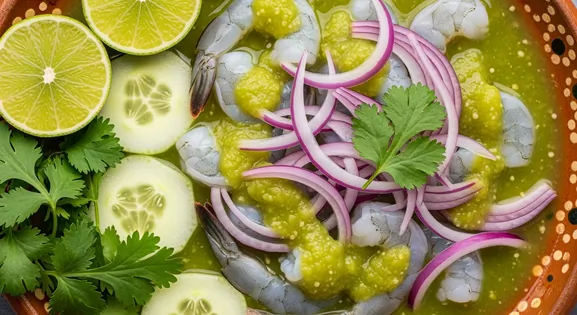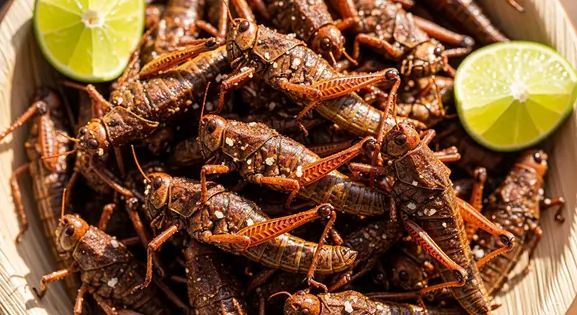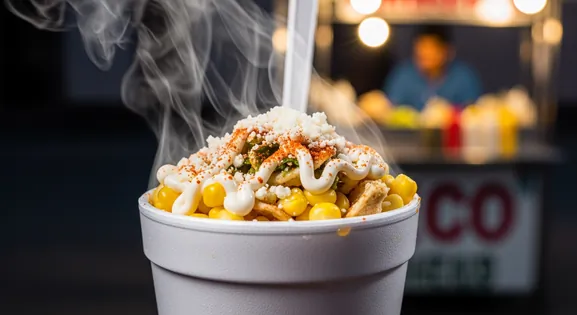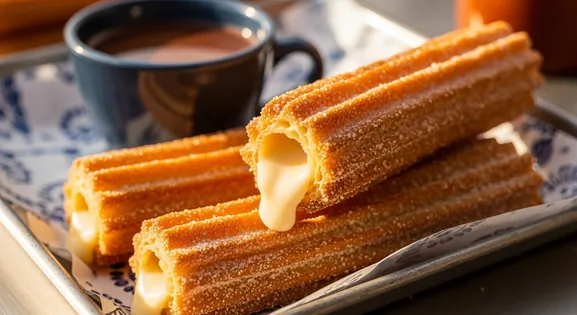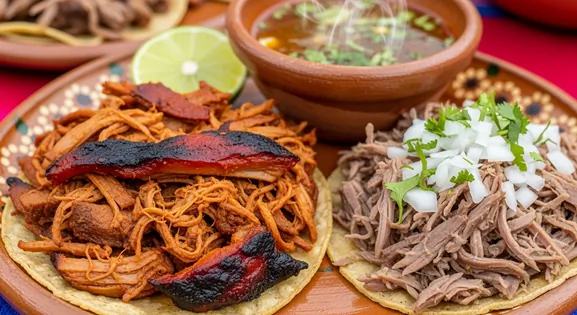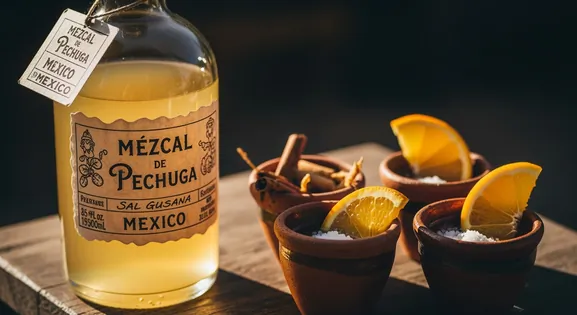Chocolate de Agua in Mexico: A Complete Food Lover's Guide
Chocolate de Agua
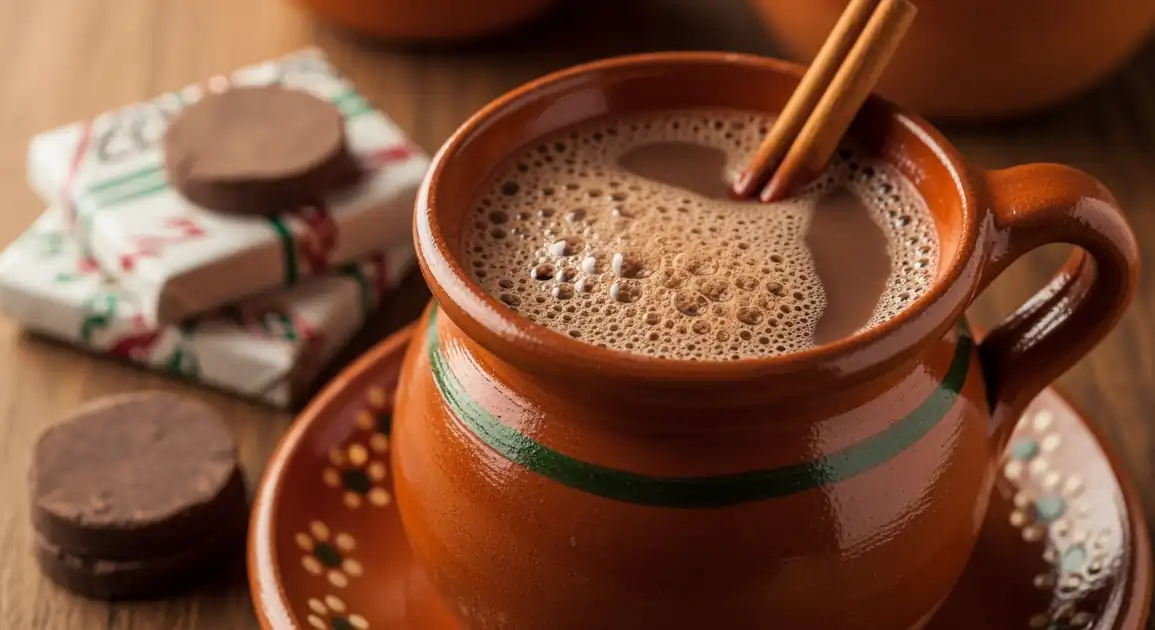
The Basics of Chocolate de Agua
Chocolate de Agua is a traditional Mexican beverage where artisanal chocolate tablets are dissolved in hot water rather than milk, creating a lighter but intensely flavored hot chocolate. This pre-Hispanic drink showcases the pure taste of cacao enhanced with cinnamon and sometimes vanilla or almonds. The signature preparation involves frothing with a wooden molinillo whisk, creating a light foam layer that's essential to the authentic experience.
The Art of Preparation
Traditional preparation begins with artisanal chocolate tablets (typically a blend of cacao, sugar, cinnamon, and sometimes almonds) ground on metates (stone grinders). The tablets are broken into pieces and dissolved in simmering water. The crucial step is frothing the mixture with a molinillo—a wooden whisk with movable rings that's rotated between the palms to create foam. This frothing not only adds air but also helps distribute the chocolate particles evenly throughout the drink. The beverage is served hot, often in traditional clay mugs that help maintain temperature.
Key Ingredients of Chocolate de Agua
Cacao Beans
The foundation of chocolate, these beans are roasted and ground to form the chocolate mass. Their quality dictates the depth and complexity of the final drink, offering notes from earthy to fruity.
Quality indicator: Look for chocolate made from high-quality, often criollo or forastero, cacao beans, which contribute to a richer, more nuanced flavor profile.
Cinnamon
A quintessential spice in Mexican chocolate, cinnamon adds warmth, sweetness, and a distinctive aromatic complexity that complements the cacao. It's often ground directly into the chocolate tablets.
Quality indicator: Authentic Mexican cinnamon (Canela) has a softer, more fragrant profile than Ceylon or cassia cinnamon, contributing a delicate warmth without overpowering the chocolate.
Water
Unlike milk-based hot chocolate, water allows the pure flavors of the cacao and spices to shine through, resulting in a lighter body and more intense chocolate experience.
Quality indicator: The use of purified, clean water is crucial for both taste and health, ensuring the true essence of the chocolate is preserved without impurities.
What to Serve with This Dish
Pan Dulce
baked good
Sweet Mexican pastries like conchas or churros are ideal for dipping into the warm, frothy chocolate, creating a delightful contrast of textures and flavors.
Tamales
savory dish
A traditional pairing, especially for breakfast. The savory, often slightly sweet, corn masa of tamales provides a hearty counterpoint to the rich chocolate, balancing the meal.
The Culinary Legend of Chocolate de Agua
Chocolate de Agua dates back to pre-Hispanic Mesoamerica, where indigenous peoples consumed cacao-based drinks long before European contact. The Aztecs and Mayans valued cacao as a sacred substance and prepared it with water, often unsweetened and sometimes spiced with chili. Following Spanish colonization, Europeans added sugar and eventually milk, but the water-based version remained important, especially in regions like Oaxaca where indigenous traditions persisted. Today, Chocolate de Agua represents the closest connection to ancient Mesoamerican chocolate consumption practices.
Local Chocolate de Agua Variations in Mexico
Traditional Cinnamon Chocolate de Agua
The classic version featuring cinnamon, which adds warmth and complexity to the chocolate flavor.
Almond Chocolate de Agua
Includes ground almonds in the chocolate tablet, creating a subtle nutty undertone and slightly thicker texture.
Vanilla Chocolate de Agua
Enhanced with vanilla, which adds floral notes and complements the chocolate's natural flavors.
Chili Chocolate de Agua
An homage to ancient recipes, incorporating mild chili that adds warmth and complexity without overwhelming spiciness.
Unsweetened Traditional Chocolate de Agua
Uses chocolate tablets with minimal or no added sugar, showcasing the natural bitterness of cacao.
Spotting Quality: What to Look For
What to Look For
-
Freshly prepared to order
The best Chocolate de Agua is prepared fresh for each customer. Look for vendors actively preparing drinks rather than keeping large batches sitting out.
-
Very hot temperature when served
Properly prepared Chocolate de Agua should be served very hot, which helps ensure optimal quality and freshness.
-
Clean preparation area and equipment
Observe the cleanliness of molinillos, serving vessels, and the general preparation area.
-
Agua purificada (purified water) usage
Quality vendors, especially those catering to tourists, will use purified water. It's acceptable to ask if they use 'agua purificada' for preparation.
-
Proper froth on top
Well-prepared Chocolate de Agua should have a light froth layer on top, indicating proper preparation with a molinillo.
What to avoid
-
Lukewarm temperature
Avoid if served at room temperature or barely warm, as this could indicate it's been sitting out for too long.
-
Premixed large batches sitting for hours
This can compromise freshness, especially in warmer weather. Prefer vendors who prepare small batches or individual servings.
-
Dirty or rusty preparation equipment
While traditional equipment may look worn, it should still be clean and well-maintained.
-
Unusual smell or visible contaminants
Fresh Chocolate de Agua should smell pleasantly of chocolate and spices. Any off odors or visible impurities are warning signs.
-
Floating film or separation
Properly prepared Chocolate de Agua should be well-mixed without separation of fats or unusual films on the surface.
Explore Chocolate de Agua in Detail: City Guides
Discover where to find the best Chocolate de Agua and learn local tips in these cities:
Dietary Information
Dietary Information
Important Note for Travelers: Your safety is our priority. Below are the common allergens associated with the traditional preparation of this dish. However, recipes and ingredients can vary significantly between establishments. Always confirm all ingredients directly with the food vendor before ordering, especially if you have a severe allergy.
Potential Allergens
Dietary Suitability
How to Order Chocolate de Agua
Frequently Asked Questions about Chocolate de Agua
What is Chocolate de Agua?
Chocolate de Agua is a traditional Mexican hot beverage made by dissolving artisanal chocolate tablets in hot water. Originating in pre-Hispanic times, it offers a lighter texture than milk-based hot chocolate but a more intense, pure chocolate flavor, often enhanced with cinnamon. It's typically whisked to frothiness using a molinillo.
How does Chocolate de Agua taste compared to regular hot chocolate?
It's lighter in texture but offers a more pronounced, pure chocolate taste, as water doesn't mask the chocolate's natural flavors. Less creamy but more aromatic, with earthy notes of cacao more evident. Traditional versions balance sweetness with bitterness and warm spices like cinnamon.
How can tourists ensure quality when drinking Chocolate de Agua?
Choose established restaurants, market stalls, or specialty chocolate shops. Verify they use purified water ('agua purificada') and serve the drink very hot. Avoid places where the chocolate appears to have been sitting at lukewarm temperatures for extended periods, as this can affect quality.
Is Chocolate de Agua vegetarian or vegan?
Traditional Chocolate de Agua is vegetarian. However, it's not always vegan, as some chocolate tablets may contain sugar processed with bone char or small amounts of milk solids/honey. For a vegan version, seek vendors offering specifically vegan chocolate or inquire about ingredients.
What's the difference between Chocolate de Agua and Chocolate de Leche?
The primary difference is the liquid base: water versus milk. Chocolate de Agua is lighter, less creamy, and has a more pronounced cacao flavor. Chocolate de Leche is richer and creamier. Traditionally, Chocolate de Agua predates the milk version, originating from pre-colonial Mexico.
What makes Oaxacan chocolate special for Chocolate de Agua?
Oaxacan chocolate is renowned for its traditional stone-ground production, preserving more cacao oils and complex flavors. It often includes cinnamon and almonds. Its grainier texture creates an authentic, rustic Chocolate de Agua, reflecting centuries-old chocolate-making traditions.
Expert How-To Guides about Chocolate de Agua
How to Spot an Authentic Chocolate de Agua Vendor
Find the most authentic and quality Chocolate de Agua by looking for these indicators.
- Look for vendors using traditional clay pots ('ollas de barro') rather than metal pots for heating.
- Check if they're using a wooden molinillo (traditional whisk) to froth the drink.
- Authentic vendors will have visible chocolate tablets from local producers, often wrapped in simple paper.
- Good vendors prepare each serving fresh rather than keeping a large batch sitting for hours.
- Quality vendors will serve the drink hot (but not scalding) in traditional clay mugs ('tazas de barro').
- Observe if locals frequent the establishment—this is often a sign of quality and authenticity.
How to Drink Chocolate de Agua Like a Local
Enjoy your Chocolate de Agua the traditional Oaxacan way with these steps.
- Allow the drink to cool slightly before your first sip—it should be hot but not burning.
- Take small sips to appreciate the complex flavors of cacao, cinnamon, and other spices.
- If served with pan dulce (sweet bread) or a piece of bread, dip it briefly in the chocolate—a common local practice.
- Stir occasionally with your spoon to maintain the frothy texture throughout.
- In some places, adding a little extra sugar is acceptable if you find it too bitter.
- Take your time—this drink is meant to be savored slowly, not rushed.
Making Your Own Chocolate de Agua
Learn how to prepare this traditional beverage in your accommodation if you purchase Oaxacan chocolate tablets.
- Break a chocolate tablet (about 30-60g depending on desired strength) into small pieces.
- Bring about 250ml of water to a boil, then reduce to a simmer.
- Add the chocolate pieces and stir until completely dissolved.
- Use a molinillo if you have one (or a whisk if not) to vigorously froth the mixture for 1-2 minutes.
- The drink is ready when it develops a light foam on top.
- Pour into a mug and add additional cinnamon or sugar to taste if desired.
Our Commitment to Quality
At Tasteplorers, our mission is to provide the most accurate and useful travel information in the world. To achieve this, all content on this site is created through our unique editorial framework. We utilize leading AI research tools, guided by our proprietary prompts, and a multi-stage validation process. This entire system is overseen by our editorial team to ensure everything we publish meets our high standards for accuracy, cultural nuance, and practical value for travelers.
Learn more about our Editorial Process and our Mission.
Explore regions
Europe
Discover Europe's diverse culinary landscape, from Mediterranean flavors to hearty Alpine fare. Learn to navigate markets, decode menus, and eat like a local.
Latin America & Caribbean
Discover the vibrant cuisines of Latin America & the Caribbean. Our expert guide covers everything from Mexican street food to Peruvian ceviche and market tips.
Oceania
Explore Oceania's diverse food scene. Learn about Polynesian earth ovens, Fijian feasts, and the vibrant café culture of Australia and New Zealand.
Southeast Asia
Explore Southeast Asia's diverse food cultures from Thailand to Vietnam. Get expert tips on navigating spice levels, choosing quality vendors, and understanding the rich traditions of the region.
